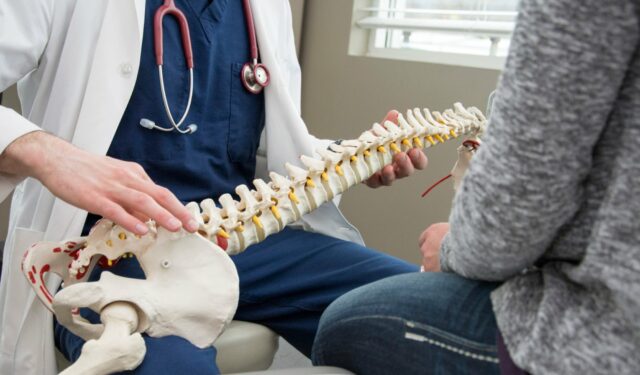Lower Crossed Syndrome
Lower Crossed Syndrome is a common muscular imbalance syndrome seen in chiropractic, which is often caused by poor posture, prolonged sitting and a lack of core stability for the spine.
The piriformis muscle is a small muscle deep in your buttock. It connects your lower spine (sacrum) to the top of your thigh bone. This muscle helps rotate your leg outward and stabilise the hip.
In some people, the sciatic nerve runs very close to or even through the piriformis muscle. If the muscle becomes tight or goes into spasm, it can press on the nerve — causing pain, tingling, or numbness down the leg. This is called Piriformis Syndrome.

Want to know more? Request a Callback
Or give us a call, to find out how we can help you with Piriformis Syndrome and Chiropractic Care: Finding Lasting Relief from Sciatic Pain.
Book an Appointment
Schedule an appointment for Piriformis Syndrome and Chiropractic Care: Finding Lasting Relief from Sciatic Pain tailored to your needs.
Pain that travels down the leg (similar to sciatica)
Tingling, numbness, or weakness in the leg
Discomfort when sitting, walking, or climbing stairs
Pain during certain movements or exercises
Some people also feel pain in the groin, pelvic area, or during bowel movements.
Piriformis Syndrome is commonly mistaken for a disc problem. Even if an MRI shows a disc bulge, that may not be the real cause of your pain. That’s why an accurate diagnosis is so important.
Chiropractors check your spine, pelvis, and muscle function. They’ll look for signs of tension in the piriformis muscle, joint imbalances, and nerve irritation. In most cases, no scans are needed — just hands-on testing and movement analysis.
If nerve symptoms are present, further tests help rule out disc injuries. Imaging is only needed if your chiropractor suspects something more serious.
Chiropractic care focuses on relieving muscle tension and restoring proper joint movement. Treatment may include:
Spinal and pelvic adjustments
Stretches and strengthening exercises
Posture and movement advice
The goal is to reduce pressure on the sciatic nerve, ease pain, and improve muscle balance.
With the right treatment, most people recover well from piriformis syndrome. Once the muscle relaxes and the nerve is no longer irritated, symptoms usually improve quickly.
To prevent flare-ups, your chiropractor may recommend lifestyle or exercise changes — especially if you sit for long periods or have weak core/glute muscles.
You may be at higher risk for ongoing pain if you have:
Early treatment can prevent the condition from becoming chronic. Don’t ignore leg or back pain — especially if it’s affecting your movement or sleep.